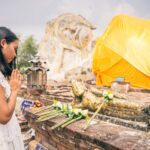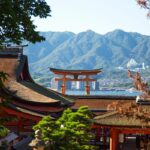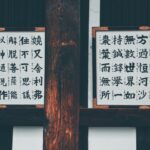Religion plays a significant role in Japanese culture. In the Japanese constitution, the right to religious freedom is guaranteed. This means that there is no single religion that has been sanctioned by the state in Japan, so people are free to practice whatever religion they like.
If you are planning on visiting Japan, it is a good idea to learn about these different religions and how they are practiced in order to further immerse yourself into the culture.
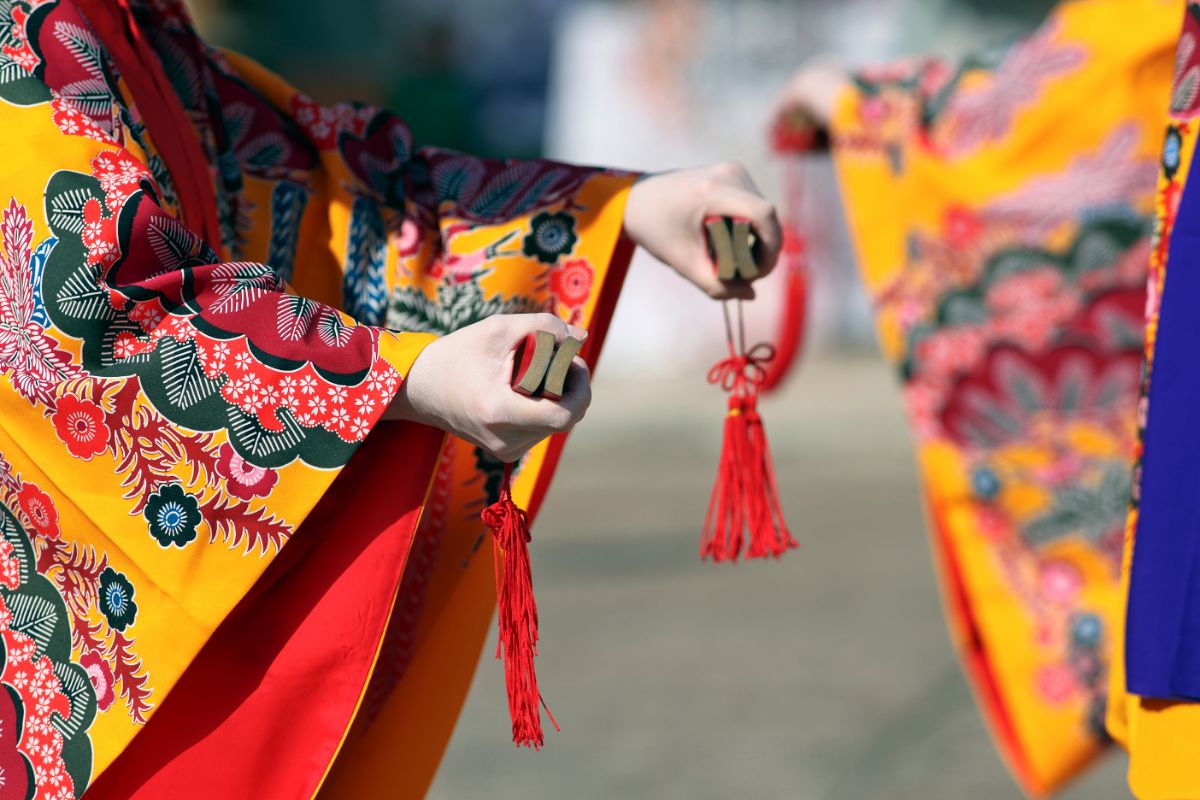
In this article, we will discuss the four most common religions in Japan and the reasons why. So, if this is of interest to you, read on for more!
The History Of Religion In Japan: An Overview
The four most common religions in Japan are Shinto, Buddhism, Christianity, and “other.”
The oldest belief system in Japan is Shinto. It has been associated closely with the creation of the islands of Japan.
In Shinto legend, the goddess of the sun, Amaterasu, saw that the islands needed a leader. So, she sent her son, Ninigi. Eventually, Jimmu, the son of Ninigi, became Japan’s first emperor.
Every emperor and shogunate after this can be traced back to Jimmu directly through their ancestry.
Buddhism first came to Japan during the 6th century C.E. It came through trade via the Silk Road and subsequently integrated with the Shinto beliefs that had already been established.
Then, in 1635, the Sakoku Edict was issued by the emperor of the time, the Tokugawa shogunate.
The Sakoku Edict closed the Japanese borders in an attempt to get rid of the foreign influence. This Edict remained in place for the next 220 years. During this period, the state-sanctioned beliefs were Shintoism, Confucianism, and Buddhism.
Families were told they had to make themselves associated with a Buddhist temple. It is thought that at this time, many people practiced Christianity in secret.
In the 19th Century, Japan was reopened and the Meiji restoration happened. Here, Shintoism and Buddhism were forced to separate. After this, violence escalated against people who practiced Buddhism and many artifacts and temples were destroyed.
At the same time, Christianity was no longer banned, and Shinto became Japan’s established religion officially.
State Shanto was eventually dismantled between 1945-46. From there, the constitution guaranteed religious freedom and forbade any religious group from exercising power politically.
The 4 Most Common Religions In Japan And The Reasons Why
Let’s check out the four main religions in Japan in more detail!
Shinto
As previously mentioned, Shinto is the oldest religion in Japan (see also ‘What Happens After Death In Shinto? – Understanding The Japanese Afterlife‘). It is the most commonly practiced religion, with 70.4% of the population identifying as Shinto.
Shinto focuses on reverence for kami (see also ‘Are Kami Good Or Evil?‘), also known as spirits, and ritual. Shinto (see also ‘Who Is The Founder Of Shinto? – Shintoism 101‘) does not have a holy deity, a central doctrine, or a sacred text, so it is considered by many to be a belief system more than a religion.
Because of this, many people who identify as Shinto also identify with a religion like Buddhism.
At the center of Shinto is the belief in spirits, known as kami. Kami are spirits that control powerful businesses and natural occurrences. They also animate people and have influence over anything else considered to be “of greatness.”
Kami are represented inside shrines. Inside these shrines, practitioners of Shinto will perform rituals to revere the kami. The rituals will also maintain a balance between humanity and nature.
In Japan, there are 80,000 Shinto shrines. However, this number does not include the small shrines that are present in the homes of many Japanese people.
Additionally, the rituals of Shinto are connected to the imperial family’s ascension practices. The Emperor in 2019, Emperor Akihito, abdicated.
The throne was passed to his son, Naruhito. The responsibilities were passed down in various festivities that were sponsored by the state.
However, in the same year, many organizations encompassing other religions filed a lawsuit against both the imperial family and the government.
They stated that because ascension rituals are historically connected to Shinto, the government’s decision to fund them was unconstitutional.
Buddhism
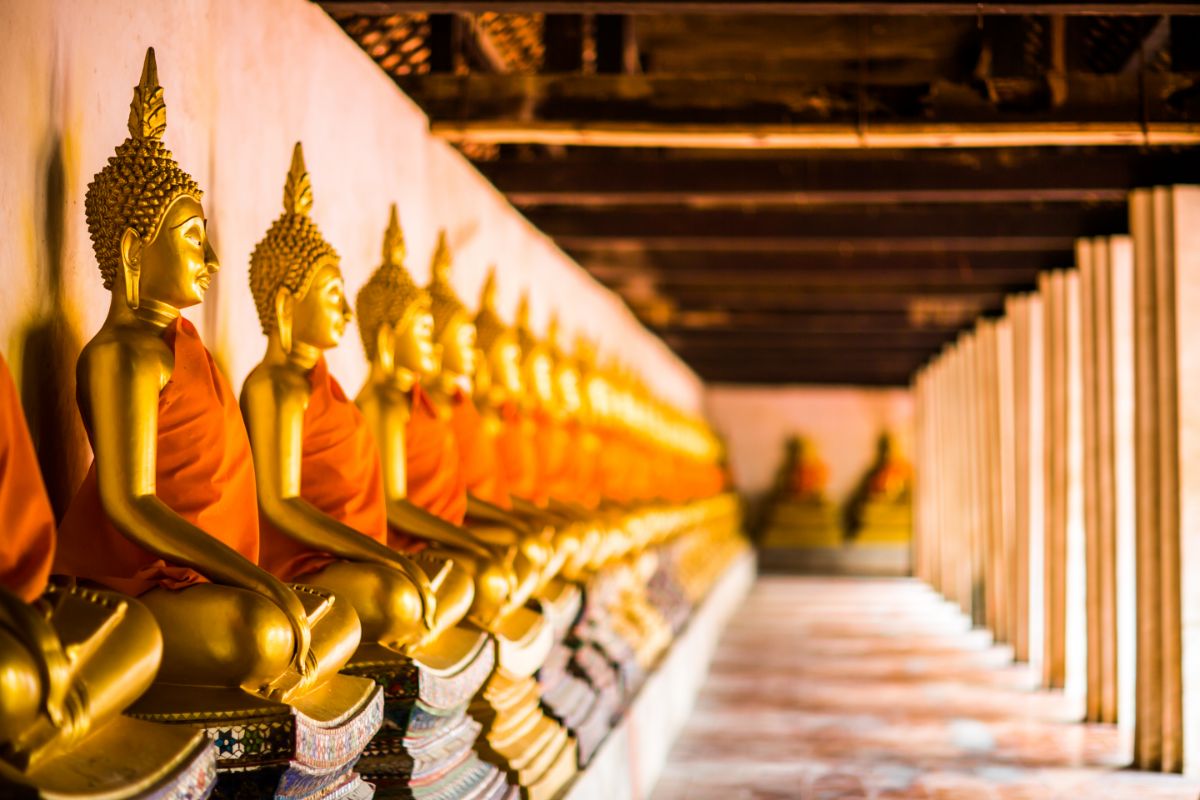
Buddhism originated in 6th century C.E in India. Through Korea and China, it arrived in Japan. Buddhism is the second most popular religion in Japan, with 69.8% of people considering themselves to be Buddhist.
Buddhism’s practices and beliefs are based on the Eightfold Path and the Four Noble Truths, which were combined with Shinto in Japan until Buddhism was prohibited.
Even when the ban on Buddhism in Japan was lifted, it continued to be in decline until the 1980s. Since then, the number of people who practice Buddhism has risen in popularity. This is particularly true of Nichiren Buddhism, where social responsibility is valued highly.
In Japan, the primary school of Buddhism is Mahayana Buddhism. Other schools include Zen, Shingon, Nichiren, and Pure Land.
Buddhist practices are present in ceremonies that are indicative of a life change, such as a funeral or a marriage.
Christianity
Christianity was first introduced to Japan by Portuguese Catholics in 1549. In 1570, there were around twenty missionaries in Japan, located around and in Nagasaki. Today, around 1.4% of the Japanese population consider themselves to be Christian.
However, as previously mentioned, the 1635 Sakoku Edicts banned Christianity, although many Christians practiced secretly. They then became known as hidden Christians or Kakure Kirishitan.
The ban on Christianity was lifted in the 1800s. After this, schools were built in Japan by Protestant missionaries, who also focused on converting the Shinto population and social welfare.
Additionally, the Kakure Kirishitans also discussed reviving Catholicism, and as a result, towns, a cathedral, and a castle were built to tell the story of the Kakure Kirishitan and the Catholic revival in the 1800s and 1900s.
However, while being the third most popular religion in Japan, Christianity never developed a stronger following than Shinto or Buddhism because it is monotheistic, which is different from the traditions and cultural beliefs of Japan.
Other Religions
Other religions make up less than 1% of the population individually, but collectively they make up 6.9% of the population. Religions included in this percentage are animism, Judaism, Islam, Baha’i Faith, and Hinduism.
Animism is practiced by the indigenous Ainu people, who are based mainly on the islands of Honshu and Hokkaido.
Additionally, many Muslims living in Japan are not native to Japan, they are typically either immigrants or refugees.
For example, Uighur Muslims originally from mainland China are a significant part of the Muslim population in Japan, and Rohingya Muslims are currently living in Japan having fled persecution in Myanmar, also known as Burma.
Final Thoughts
The four most common religions in Japan are Shinto, which makes up 70.4% of the population, Buddhism, which makes up 69,8% of the population, Christianity, which makes up 1.4% of the population, and other religions, which collectively make up 6.9% of the population.
The reasons for this are embedded in the history of Japan. Shinto has been practiced in Japan for the longest period of time, and it was closely associated with Buddhism.
Christianity was introduced much later and prohibited not long after it was introduced, meaning it could not be practiced freely. Not only that, but it is a monotheistic religion that contradicts both Buddhism and Shinto.
Finally, an overwhelming majority of Japanese people practice Shinto or Buddhism, so there will not be many of the population that practice other religions.
- 16 Best Websites To Watch Japanese Movies With English Subtitles - May 11, 2023
- Is ZIPAIR The Best Airline For Traveling To Japan? - May 11, 2023
- Ryu Murakami Vs Haruki Murakami – Which One Should You Read? - May 11, 2023

